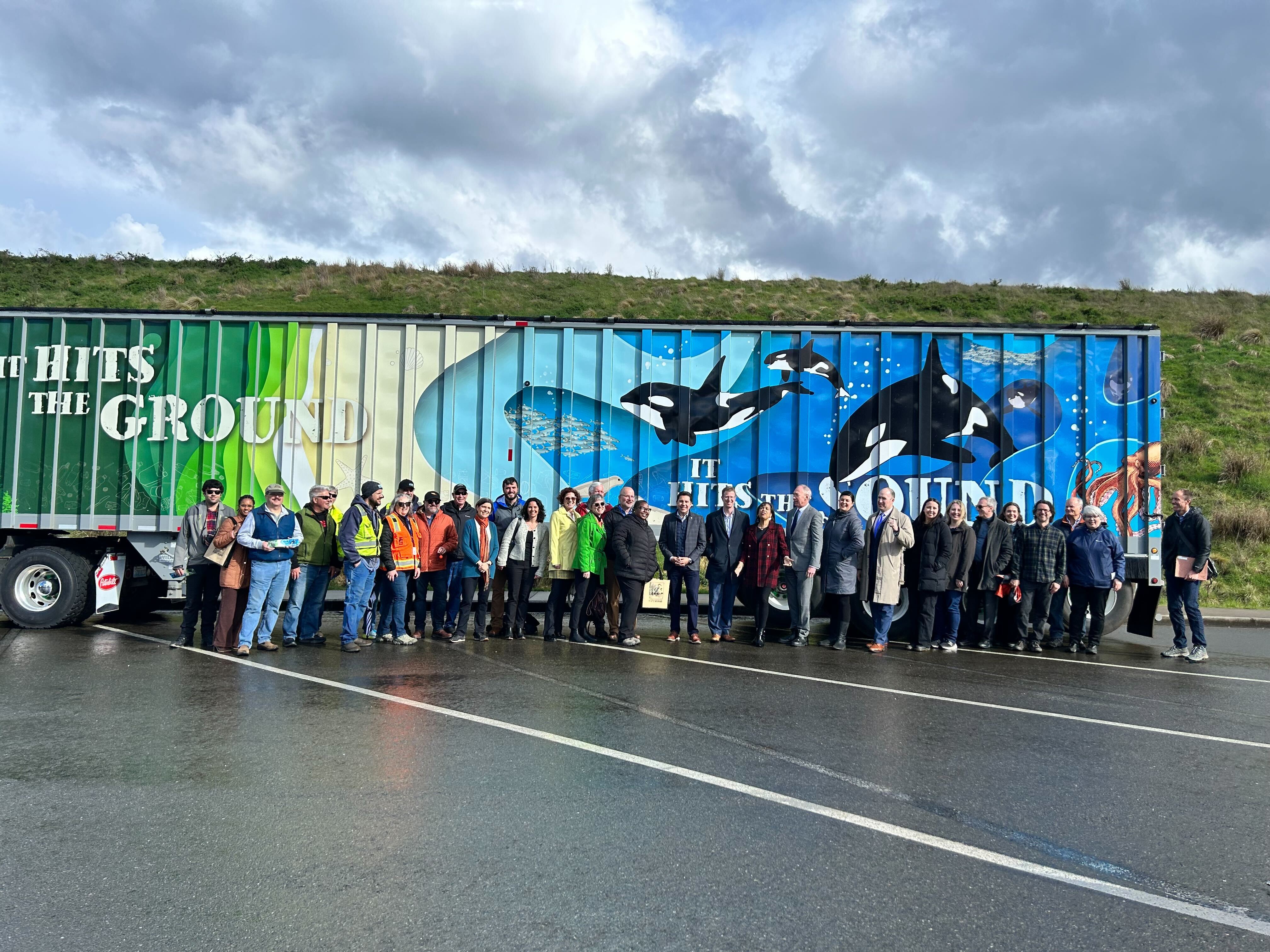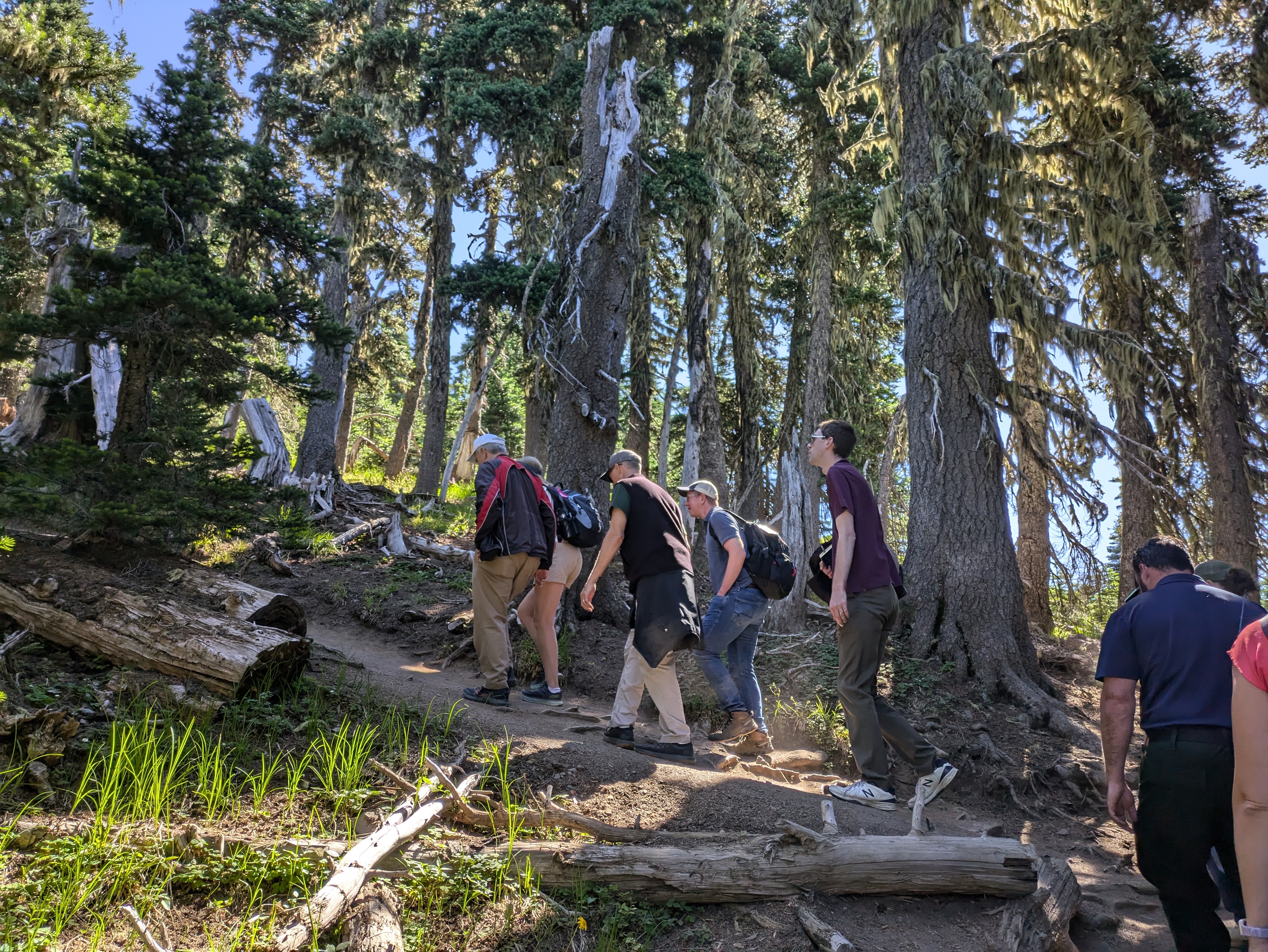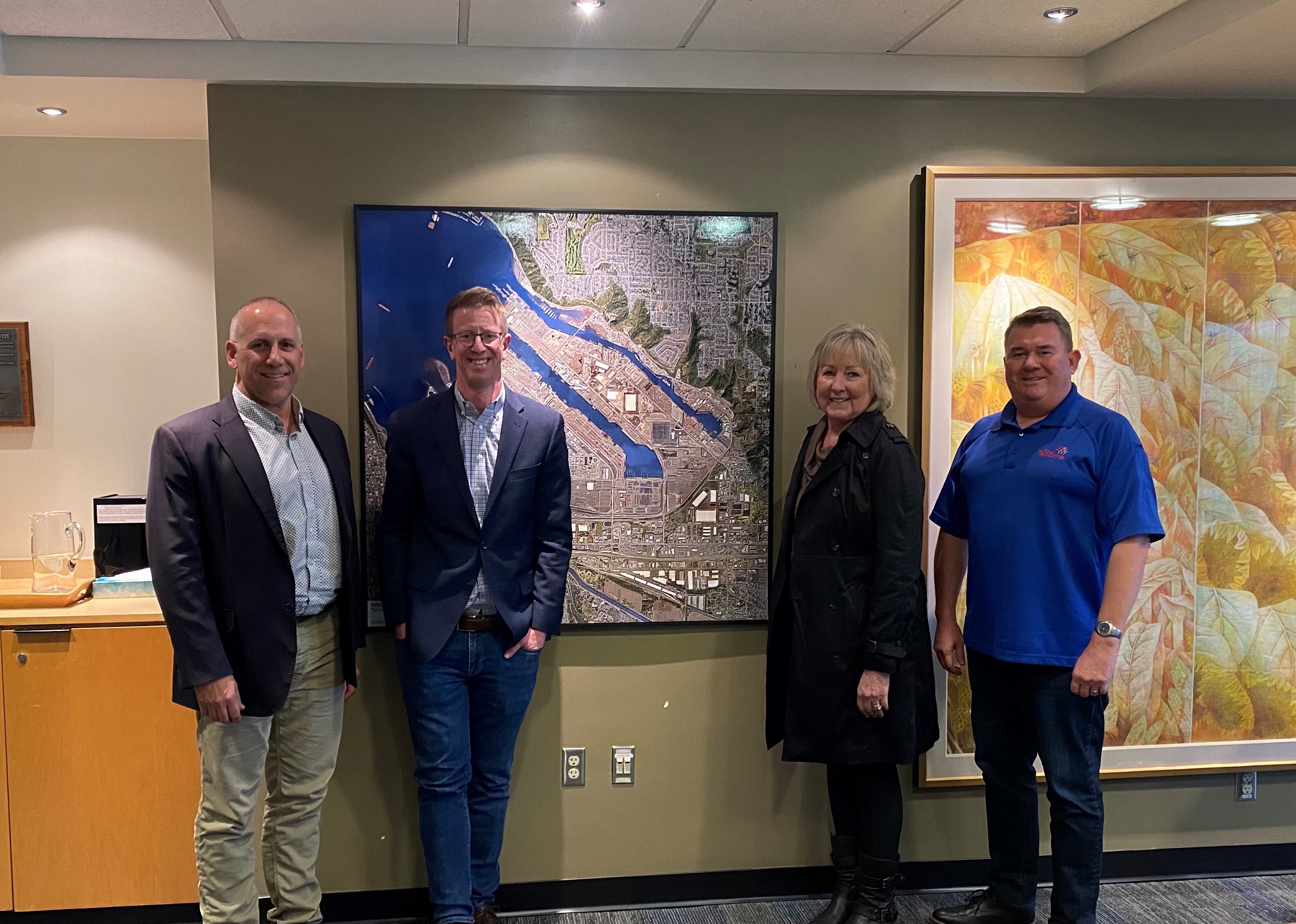Working to Support Our Environment and Clean Energy in Our Region
Hello Folks –
Halloween is right around the corner, and I hope everyone has a great time trick-or-treating and enjoying a piece of candy (or two).
I also want to remind folks that it is election season and your ballots should’ve arrived in the mail! Make sure to get your ballots in and if you have any questions or need additional information, visit: https://www.sos.wa.gov/elections.
Similar to my most recent two newsletters, I’d like to look back on some of the progress we’ve made in recent years – this time, specifically related to protecting our environment. Let’s dive in!
Protecting and Restoring Puget Sound
Puget Sound is our region’s most iconic body of water. It’s a place on which generations of friends and neighbors have built their lives and made their livelihoods. But if future generations are going to have those opportunities, we’ve got to take actions now to protect and restore the Sound – and we need a strong federal partner in these efforts.
Back in 2013, then-Representative Denny Heck and I launched the Puget Sound Recovery Caucus, focusing on recovering Puget Sound through steps like preventing pollution from urban storm water runoff, protecting and restoring habitat, and re-opening shellfish beds. Since 2021, I’ve been doing that work with my terrific colleague from the South Sound, Rep. Marilyn Strickland.

Through the Puget Sound Recovery Caucus, we’ve worked to get the federal government to be a better partner on Puget Sound recovery. For example, in the 11 years since we created the caucus, we’ve seen federal funding for Puget Sound recovery more than double. In addition, in 2022, the Puget SOS Act, legislation I led with Rep. Strickland, was signed into law by President Biden as part of the National Defense Authorization Act. That new law established the Puget Sound Recovery National Program Office through the U.S. Environmental Protection Agency to formalize the federal government as a partner to state, tribal, and local entities. Together, with Representative Strickland, the Puget Sound Recovery Caucus, and many regional partners, we got this done to restore salmon and orca populations, ensure future generations can dig for clams, uphold tribal treaty rights, and so much more.

In our region, salmon recovery is also a big deal. That’s why Senator Cantwell and I tag-teamed to create a new program to restore culverts and improve fish passage as part of the Bipartisan Infrastructure Law. That’s critically important is we’re going to recover the salmon populations that are our region’s economy, culture, and way of life. And we’re already seeing benefits from that program with an additional $18.3 million in federal funding coming to our region through this new program.
.jpg)
And, as a Member of the House Appropriations Committee, I’ve worked hard to champion new funding for salmon recovery, fish passage and waterway recovery. I’m proud of how far we’ve come and am hopeful that it will strengthen the legacy we leave for future generations.
Protecting Critical Areas and Growing Jobs on the Olympic Peninsula
Speaking of iconic locations in our neck of the woods, my work to protect our environment and support local jobs hasn’t stopped at Puget Sound. I’ve worked hard during my time as your representative to ensure the federal government is a strong partner in getting Olympic National Park (ONP) and the Olympic National Forest (ONF) the funding needed to ensure the future of these iconic public lands. The ONP and ONF are absolute jewels; however, they’ve been threatened by climate change (with decreased snowpack, changing precipitation patters that have altered ecosystems, and wildfires) and by deteriorating infrastructure.
.jpg)
That’s part of the reason I was an active leader in working to pass the Great American Outdoors Act, which was signed into law in 2020. This historic legislation advanced two big priorities of mine – securing permanent and full funding for the Land and Water Conservation Fund and providing dedicated funding to address the maintenance backlog and make much-needed repairs at ONP and throughout our National Park system.
I was lucky to grow up with the ONP in my backyard. I’ve seen firsthand how our public lands have captivated both visitors and residents alike and served as economic drivers for communities like Port Angeles and Forks. I know how important it is for the federal government to be a strong partner in protecting these lands. Our National Park system and public lands encourage tourism, create jobs, and support rural economies, which is why I’ve worked hard to ensure the incredible natural assets in our region can continue to provide amazing visitor experiences and serve as economic drivers for rural communities for future generations.
.jpg)
Back in 2019, I was honored to receive the National Park Heritage Award from the National Parks Conservation Association in recognition of my work leading the charge on the John. D. Dingell Jr. Conservation, Management, and Recreation Act – a bipartisan public lands package that consisted of more than one hundred public lands, natural resources, and water bills. This legislation created Washington’s first two National Heritage Areas, including the Maritime Washington National Heritage Area Act to designate a majority of Western Washington’s shoreline as a National Heritage Area. The passage of each of these pieces of legislation served as huge wins for our region. It means we can preserve our region’s maritime history, promote maritime tourism and drive economic development along our shorelines.
In addition to championing efforts to protect ONP and the communities that rely on it, I’ve worked hard to unite the environmental community and the timber industry in our neck of the woods with a common goal of increasing harvest levels on the ONF in a responsible way. In 2015, I helped launch the Olympic Forest Collaborative, the first of its kind on the Olympic Peninsula solely dedicated to creating environmentally sound forests while increasing sustainable timber harvests.

For years, the ONF has struggled to produce meaningful harvest levels necessary to improve forest health, restore critical salmon spawning habitat, and support timber dependent communities. Since its inception, the Collaborative has executed a few pilot projects that have helped the ONF produce a couple million additional board feet of timber while also accomplishing some important restoration goals, demonstrating the power of collaborative forest planning for meeting the goals of our region.
While there’s still more work to be done to further these efforts, I’m proud of the work we’ve achieved as a community during my time as your representative, and the willingness to form partnerships in these efforts gives me hope for the future.
Investing in Clean Energy
In our region, clean energy solutions can contribute to our environmental health and our economic growth. With tremendous assets like the Pacific Northwest National Laboratory in Sequim (PNNL-Sequim), which houses the only marine research facilities in the Department of Energy, and a unique and thriving maritime sector, it’s been a huge priority of mine during my time as your representative to ensure the federal government remains a strong partner in this arena.

Back in 2022, I had the honor of welcoming the U.S. Secretary of Energy, Jennifer Granholm, to PNNL-Sequim, to see the work being done there to tackle climate change and create alternative energy sources. The work happening at PNNL-Sequim is going to be central to the nation’s energy future. That’s why I was thrilled to support funding for a new research vessel that will be key to PNNL-Sequim’s efforts. We also celebrated that PNNL-Sequim had been awarded new federal funding to support pioneering efforts to extra critical minerals from macroalgae in our waterways. This investment was a testament to our commitment to innovative research that can lead to groundbreaking advancements in energy technologies.
.jpg)
And thanks to the Inflation Reduction Act, we’ve seen some other big wins for clean energy in our neck of the woods. Through the Biden-Harris Administration’s Investing in America Agenda, we’ve secured $2.8 billion in federal funding for private sector manufacturing and clean energy projects, including $1 billion for the Pacific Northwest Hydrogen Hub, which is working to reduce carbon and gas emissions in Washington, Oregon, and Montana.
We also saw a major $54 million investment in the Port of Tacoma for the Husky Terminal Expansion, which will create new jobs and reduce emissions in Pierce County, while putting the Port of Tacoma at the forefront of trade and in shipping Washington state products all over the world. We’ve even seen the federal government provide funding for new electrical vehicle charging stations on the Olympic Peninsula to support tourism in our region.

Seeing the federal government invest in important efforts like these in our region is a big deal – it means the costs of these projects won’t fall solely on the backs of local taxpayers. These investments will help our region provide clean power to coastal communities, drive economic development, and create and grow jobs in our region.
And there’s plenty more I could share. But the most important thing I want to leave you with today is that it has been an honor to work to strengthen our natural environment. When we work together to protect our national parks, conserve salmon, recover Puget Sound, and secure our energy future, our economy and our environment are stronger and more resilient.
OK – that’s it for now, folks. As always, I’m honored to represent you.
Sincerely,
Derek
